BLOG
Weekends filled with Walleye in Canada!!! –André Gervais
Yo-Zuri hardbaits are the staple in every one of my tackle boxes. But, I especially rely on them when chasing after the big walleyes that we are notorious for in Canada. I really enjoy walleye fishing on the weekend because there are no two trips the same, and the walleye are very aggressive fish. It is always a great opportunity to hit the water and spend time with great fishing buddies and family.
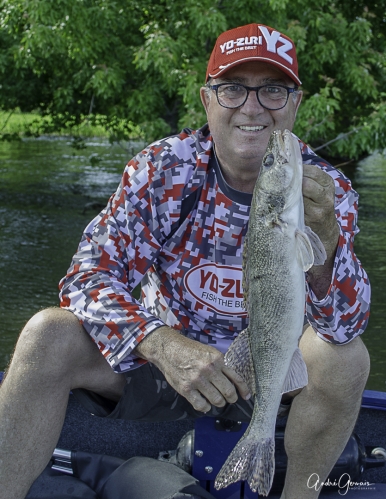
For most of my life I have known the best way to catch walleye is by trolling. This is a pretty simple technique done by boat: tie on a Yo-Zuri Crystal Minnow Walleye DD, throw the bait behind the boat and drive at a steady slow pace. A critical element to being successful and a common question I hear a lot is, “what speed should I troll at?” this is dependent on the bait you are throwing and the depths you want to target. For me I prefer a really slow speed to help the Yo-Zuri Crystal Minnow Walleye DD dive to a depth of 8-9 feet. This seems to be a perfect depth for this bait because it allows the bait to “dance”. When I say dance, I mean the bait is at a wide side-to-side wobbling action and is hunting!
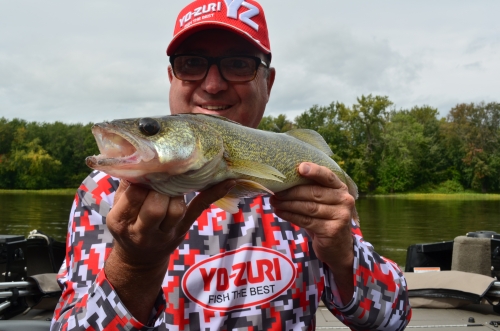
The rod and reel is really not too much of a concern to me, but I have found that line is very important; remember you are dealing with tooth critters. For me if I am fishing open water I will run straight 14-20lb Yo-Zuri TopKnot Mainline 100% Fluorocarbon. The small the line the deeper depths the bait will go. However, if I am targeting areas that have a lot grass or I am running multiple rods behind the boat I will usually run 30lb Green SuperBraid with fluorocarbon leaders. The braid helps stay more abrasion resistant in the grass.
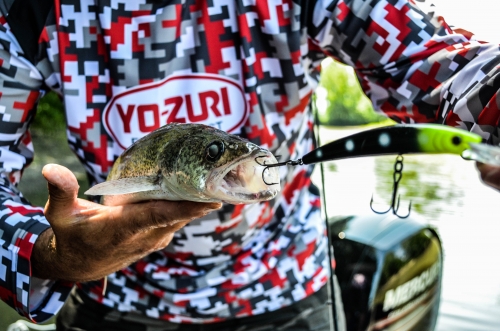
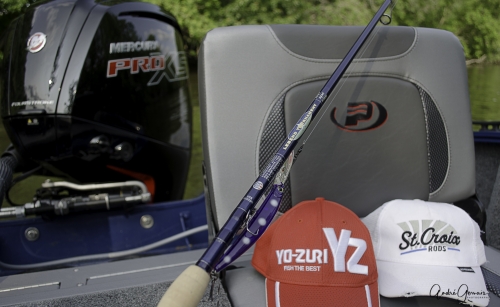
Finally the bait of choice, as I mentioned I throw the Yo-Zuri Crystal Minnow Walleye DD most of the time. This is a great bait because it dives really well, has a great action, and the colors are exactly what walleye target. Walleye prefer the really dark or the really bright colors. They are a weird fish when it comes to the color selection and resemble nothing of the natural forage. The colors I like the most are Zombie and Midnight, but will sometimes mix it up with Acid Perch and Hot Tiger. All of the colors offered by Yo-Zuri however are a great choice; these are just the ones I reach for most.
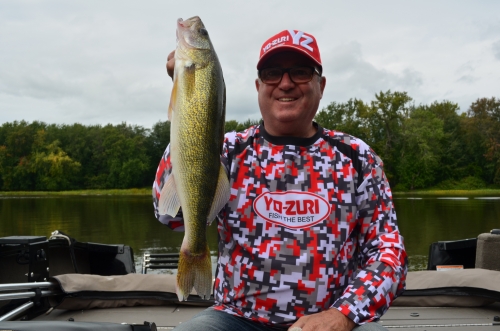
Enjoy the waters and don’t forget to bring home fresh walleye for dinner, as walleye are one of the best freshwater eating fish there is!
Take your Grandkids fishing with the Yo-Zuri Snap Bean – by Martha Goodfellow
Recently, I was blessed to have our two youngest grandkids come for a visit (ages five and three). They each had a week of their own, for what we teased was “Camp at the Grandparents.” One of our adventures was to go fishing at a friend’s pond. You should have seen the total delight and excitement on each of their faces as they caught one bream after another.
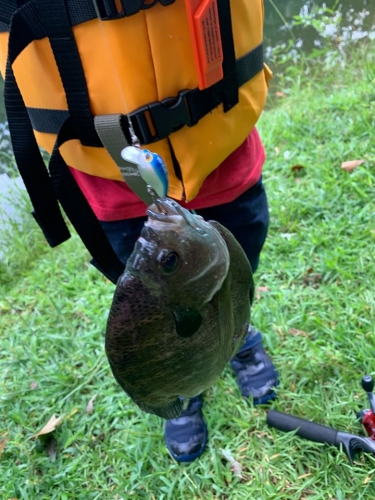
Each child had their own favorite pole and since they were the kid of the week, they could choose from several kid rods. Our grandson’s favorite was his kid spider-man pole. That pole was rigged with a Yo-Zuri Snap Bean in the silver/black back lure. Another had a silver/blue back Snap Bean. And, to mix it up a bit, we had one rigged with a plastic lure. Hands down, our five year old grandson loved using the Snap Bean. Instead of patiently waiting for a fish to find the plastic, he could slowly retrieve the Snap Bean and it kept his interest. Of course kids all have their own personalities and our 3 year old granddaughter loved using brother’s spider-man pole since he wasn’t there. J We rotated through using the Snap Bean and a plastic bait.
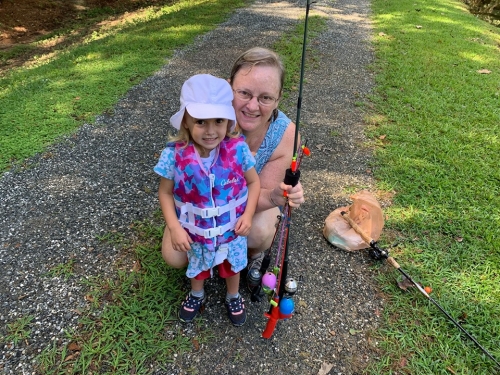
The Snap Bean worked great for the kids. Since it is a shallow diving crankbait, it stays close to the surface. The Snap Bean only weighs 1/16 oz and has one treble hook. To use on the kids poles and make it easier to get longer casts, I put a weighted bobber on the line above the lure. Using a bobber also helped the kids watch for when a fish was “playing” with their bait and for when they had a fish on.
